Cracking open Korea's first Mac mini
Posted by Wesley on
This is a long overdue story. It began exactly 7 months ago, on January 11, 2005.
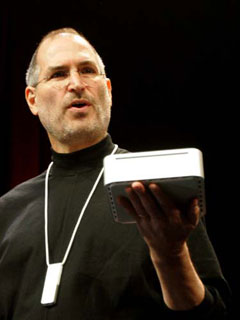 At Macworld Expo San Francisco, Steve Jobs announced a small form factor Macintosh computer called 'Mac mini'. Right up to that point, I had almost no interest at all in using a Mac. Why, my AthlonXP desktop computer was working fine. I had no need to use a largely incompatible and expensive computer that wasn't even small. But the moment I saw that Mac mini, I was absolutely shocked. A supposedly decent performing computer that has a mainboard that probably measures only about 15cm on each side, and fully operational unit costing as low as $499.
At Macworld Expo San Francisco, Steve Jobs announced a small form factor Macintosh computer called 'Mac mini'. Right up to that point, I had almost no interest at all in using a Mac. Why, my AthlonXP desktop computer was working fine. I had no need to use a largely incompatible and expensive computer that wasn't even small. But the moment I saw that Mac mini, I was absolutely shocked. A supposedly decent performing computer that has a mainboard that probably measures only about 15cm on each side, and fully operational unit costing as low as $499.
Interestingly, I already owned a computer smaller than this: Sony VAIO VGN-U50, an ultraportable notebook computer the size of a normal 3.5" hard disk. Hadn't I already filled the 'own a tiny computer' need? Apparently not. I saw the potential for replacing my desktop computer in Mac mini. VGN-U50 would still be the 'second unit', a portable device I would continuously carry around with to fill my needs. I needed something small that can be kept sitting around the house. Mac mini was it, I envisioned.

Jobs with Mac mini
Interestingly, I already owned a computer smaller than this: Sony VAIO VGN-U50, an ultraportable notebook computer the size of a normal 3.5" hard disk. Hadn't I already filled the 'own a tiny computer' need? Apparently not. I saw the potential for replacing my desktop computer in Mac mini. VGN-U50 would still be the 'second unit', a portable device I would continuously carry around with to fill my needs. I needed something small that can be kept sitting around the house. Mac mini was it, I envisioned.
The infamous Reality Distortion Field must have been really strong that day. In less than 24 hours since the keynote, I asked my friend Andy in United States to order a Mac mini for me online from Apple Store USA. Since I saw that Apple Korea would be very slow in stocking up the first wave of supply, I decided to cut the chase and just get one straight from the headquarters. Apple Korea actually shipped its first supply of Mac mini to domestic users around second week of February. As luck would have it, my order went in before the website displayed that Mac mini was backordered for 2 weeks. Checking order status, it was to ship by January 20, the day when it was meant to be first available. This meant I was getting one from the first wave of shipments.
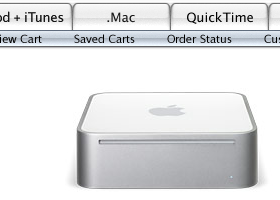
After going through Alaska, it went through a couple of hubs before coming to Andy's house on the 21st. The FedEx delivery guy actually did come the day before but mistakenly thought no one was home, so there was an unexpected one-day delay. After Andy got the shipment, he repackaged it with some other stuff I asked him to order from other stores, and promptly sent the whole thing to Korea via USPS EMS service. Basically, the Mac mini went around half the globe in what would have just been a trip less than 1000km point-to-point.
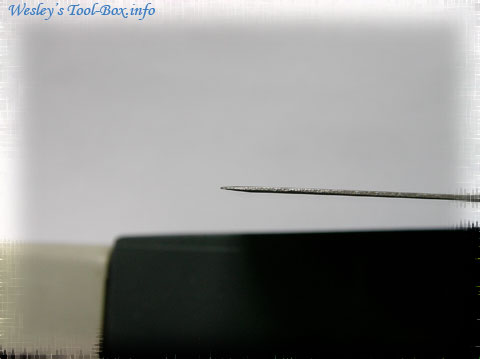
Sharp...
While waiting, I had done my own preparations. Notably, I went out to the local warehouse-style discount store and bought a putty knife. Putty knife is the 'official' tool used for opening up a Mac mini. I initially bought a thick one, but then I read it would be best to get a thin and flexible one, so I got that refunded and bought a more flexible one. It cost less than $2, and the edges were very rough, so I sanded the edges while making the 'inserting point' sharper, as pictured above.
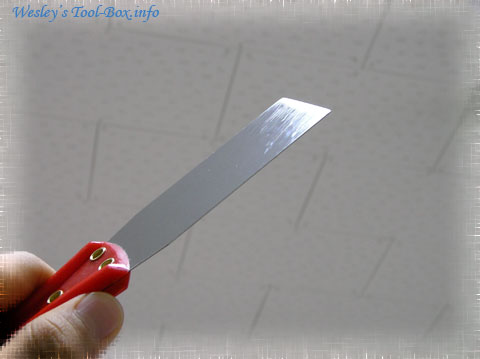
The putty knife
Here's another view of the putty knife. I also bought a 1GB DDR SDRAM module so I could do an upgrade right after cracking that Mac mini open. The default 256MB of memory wasn't going to be adequate, I thought.
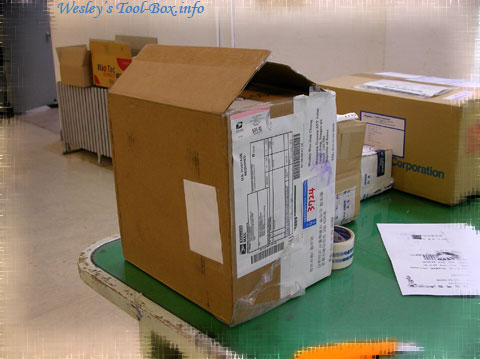
Not yet cleared from customs
The package would arrive and get into the hands of Korean Customs officers on the 26th. To minimize the delay, I went right to the post office as soon as the tracking page showed that it was in the customs office and had the whole process taken care of (i.e. sign some documents, pay the import tariff, etc.) in an hour. And so, on 6PM, January 26, the first Mac mini in Korea would meet its owner.

Mac mini served
I immediately called one of my aquaintances who was also interested in Macs and met him at a fast-food restaurant to show him the real thing. We went to my house together so he could see it boot, too.
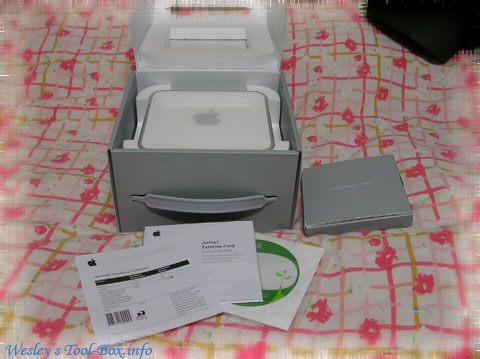
Opening ceremony
The grey box was put on the bed and opened to reveal the smallish main unit and the accompanying installation discs. After taking the whole package out, it was time to get it running.
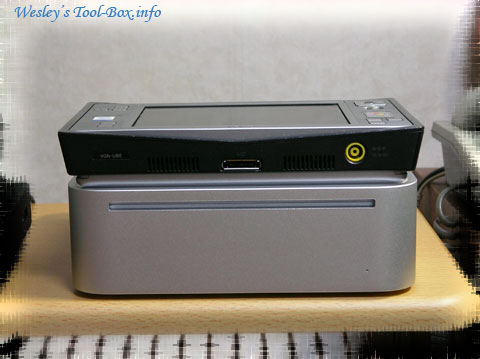
Mini and mini
But first, a quick size comparison. The aforementioned VGN-U50 was placed on top of Mac mini. Now, mini itself is quite small, only measuring 16.5cm on each side, but you can see that the Sony portable was also quite small.
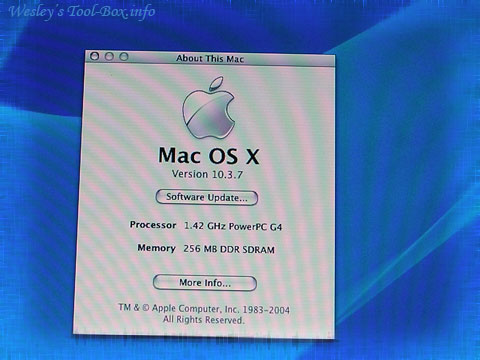
First boot
The wires were connected, and the power button was pressed. With a chime, it booted up without a hitch. We were ecstatic. The menu revealed that it was running MacOS X 10.3.7, and had 256MB of memory. Oh, yes. I had to upgrade this. My acquaintance went home at this point because it was getting late, but for me it was time to get working.
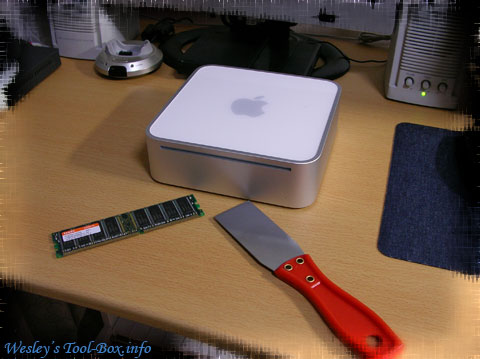
The pre-op
Less than six hours into the hands of the owner and already this Mac mini would get cracked open. I got the tool ready and started, with the camera rolling. The following are still-frames from the video I recorded.
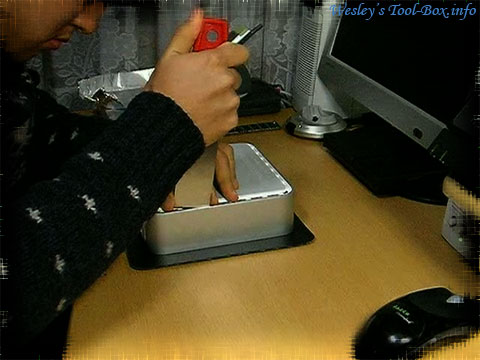
Insert
First time's the hardest, and indeed, the putty knife was somewhat hard to put in between the cracks. After a bit of wiggling...
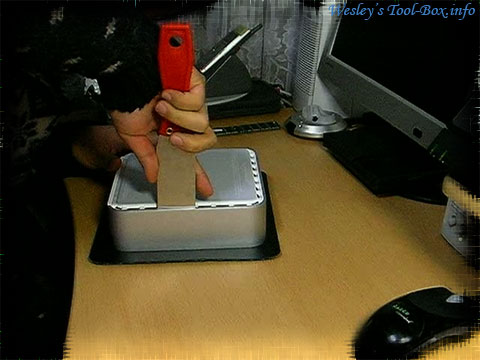
Moving along
I was able to get the putty knife going back and forth the crack. I tried to open up the crack like I would with a can opener.
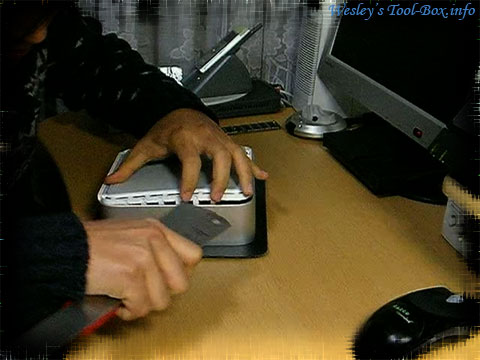
Starting to crack
The grip was somewhat hard, though, so I had to use a steel ruler with the putty knife to finally have the first set of grips yield and have the cracks start to open.
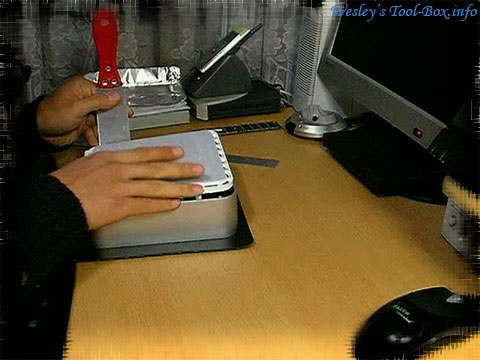
More wiggling
After that, it was relatively easy. I had the putty knife going around the other edges and have the grips released.
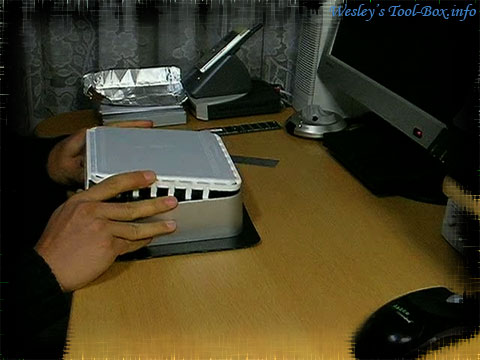
Almost there
The plastic grips were eventually all released, so I pushed the back side of the unit upwards, which made the whole lower part of the unit slide out from the cover.
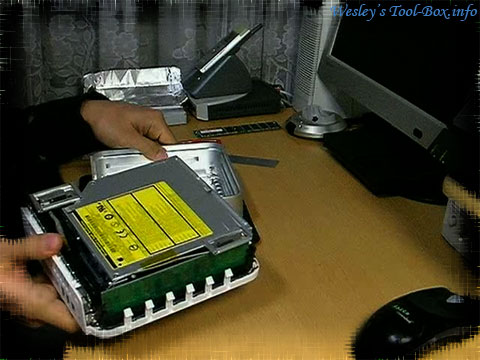
Open for business
Finally, the inside of the unit saw light for the first time since it was packaged in China a week ago. I had more work to do, but that is another story.